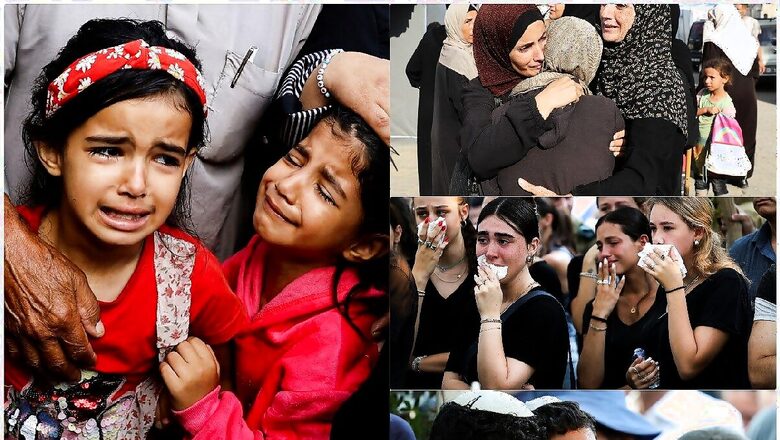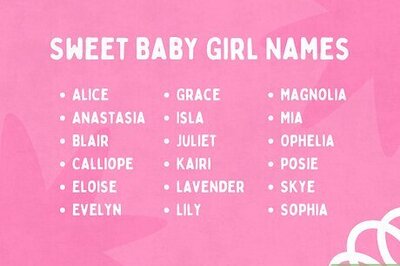
views
The war in Gaza, which has been going for almost one year, threatens to upend West Asia. What began with a well-planned shock-and-awe attack, dubbed Operation Al-Aqsa Flood, launched inside Israel by Hamas, where over a thousand were killed and hundreds were taken hostages, is now threatening to destabilise the region as well as the global economy, raising fears that it may trigger a global war. The war in Gaza has now expanded to Lebanon where Israel fights Hezbollah and the so-called Iranian Axis of Resistance, with Houthis and pro-Iran Syrian forces continue to threaten Israel, demanding a full stop to their military operation in the coastal enclave.
Palestinians in Gaza Strip living under constant bombing and ground assault on Hamas by the Israeli Defence Forces (IDF) or Israelis along the border with Lebanon in the northern part of the country where IDF fights Hezbollah or the Israelis who fear returning to their kibbutzim after the October 7 attacks, there is one thread that binds these people together – they collectively live under the shadow of a war and in fear.
Below we see, in numbers, how the war has upended the region and how many lives have been lost following the October 7 attacks and Israel’s subsequent retaliation.
Civilian Casualties
Hamas attacked southern Israel on Oct. 7, 2023, killing 1,200 people and taking about 251 hostages, 97 of whom are still held captive in Gaza, including 33 the Israeli military says are dead.
Israel’s subsequent military assault on Gaza has killed nearly 42,000 Palestinians, according to Gaza’s health ministry. It has also displaced nearly all of the enclave’s 2.3 million people, caused a hunger crisis and led to genocide allegations at the World Court that Israel denies.
One year after the October 7 attacks, Israel’s war in Gaza against Hamas continues but the focus has shifted to Lebanon and Hezbollah.
Israeli strikes against Hezbollah have killed more than 1,110 people since September 23. The toll due to Hezbollah attacks rose to 34 in Israel since October 2023, when the Lebanese militant group launched low-intensity strikes against Israeli
Dozens of civilians have been killed in Syria as well since the onset of the war in Gaza.
Since Syria’s civil war erupted in 2011, Israel has carried out hundreds of strikes in the country, mainly targeting army positions and Iran-backed fighters, including Hezbollah.
Israeli authorities rarely comment on individual strikes in Syria, but have repeatedly said they will not allow arch-enemy Iran to expand its presence there.
The strikes have increased in recent days, including on areas near the border with Lebanon.
Violence in the West Bank has surged alongside the war in Gaza which began after Hamas attacked Israel on October 7.
Since that attack, Israeli troops or settlers have killed at least 701 Palestinians in the West Bank, according to the Ramallah-based health ministry.
At least 24 Israelis, including members of the security forces, have been killed in Palestinian militant attacks in the territory during the same period, Israeli officials say.
Combatant Casualties
Over 300 IDF soldiers have died in military operations in Gaza and Lebanon. Recently, eight of its soldiers have been killed in combat in southern Lebanon as Israel made brief incursions into its neighbour’s territory.
Hamas is now significantly weakened, having lost its top leader Ismail Haniyeh, numerous military commanders, and an estimated 15,000 fighters, according to regional intelligence sources, speaking to the Washington Post.
Israeli military spokesperson Rear Admiral Daniel Hagari said Israel had killed 440 Hezbollah fighters in its ground operations in southern Lebanon and destroyed 2,000 Hezbollah targets. Hezbollah has not released any death tolls.
Dozens of Hezbollah operatives were killed in pager blasts for which Israel has not claimed responsibility. Israel also eliminated Hezbollah chief Hassan Nasrallah before intensifying strikes on Lebanon.


















Comments
0 comment